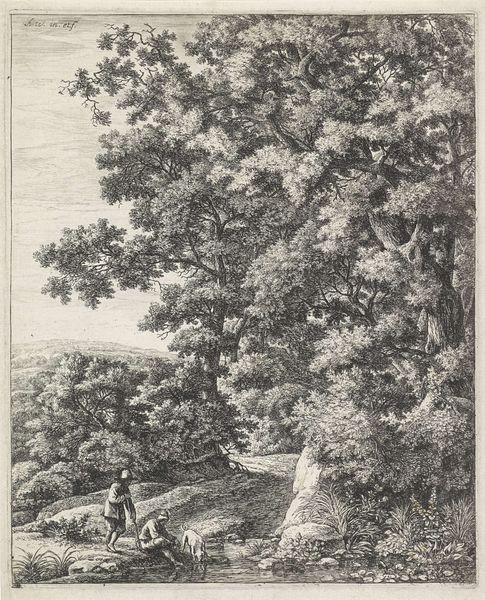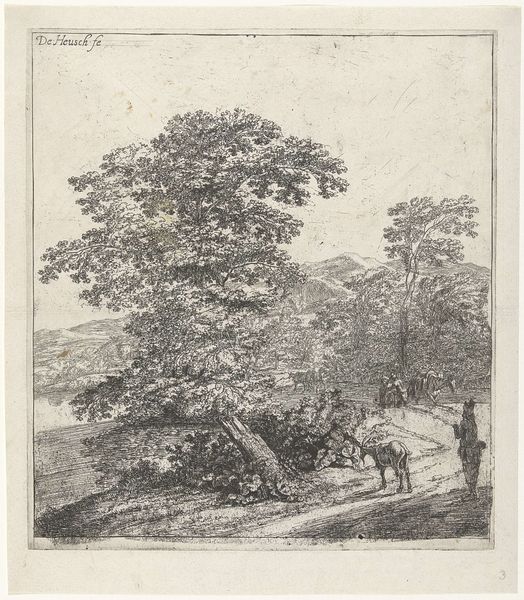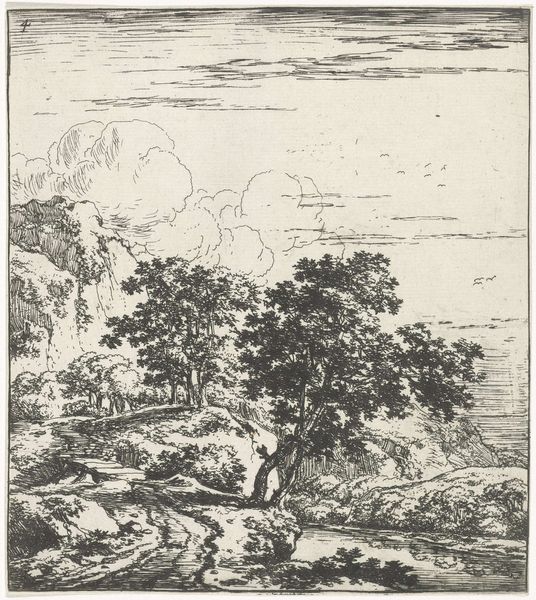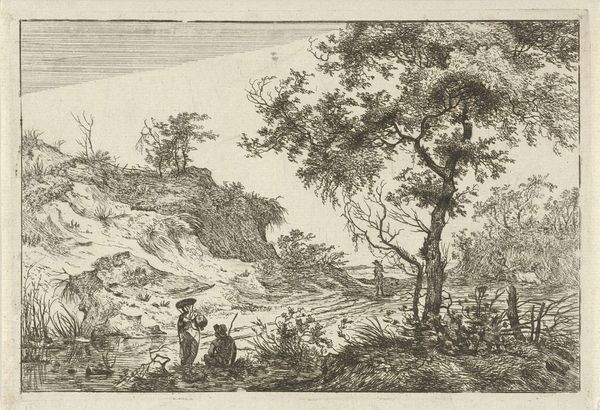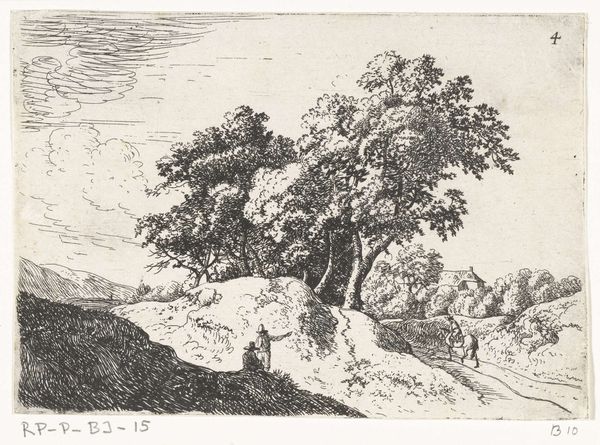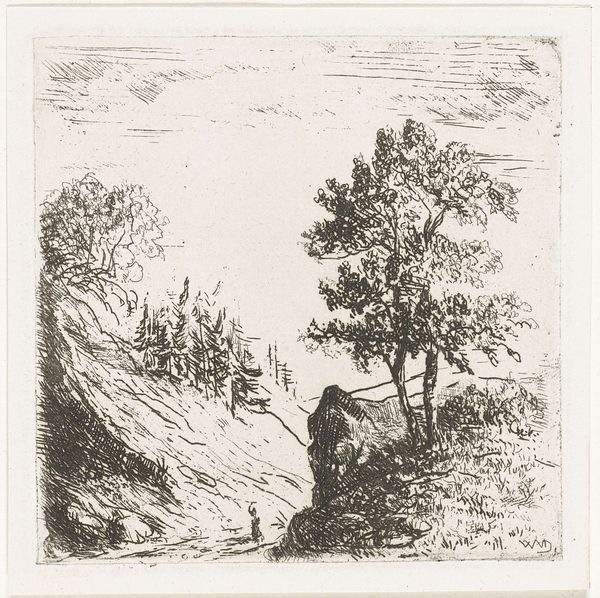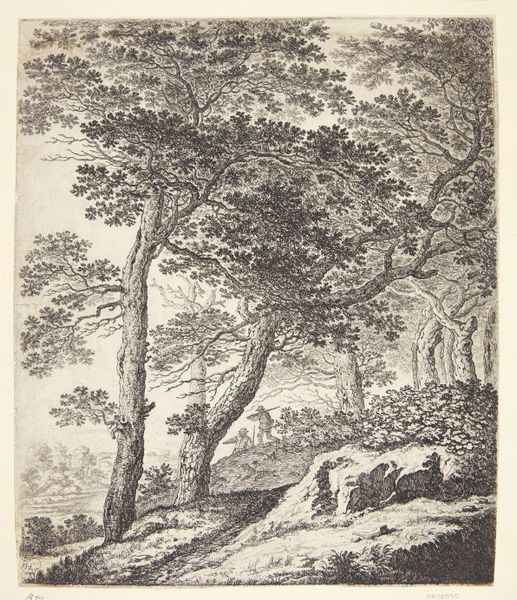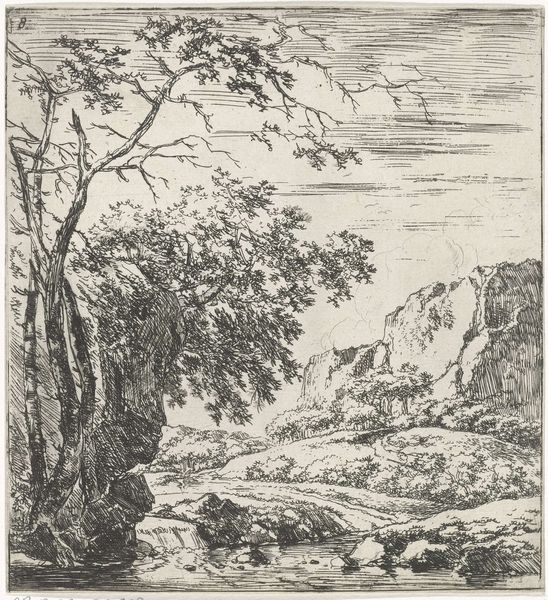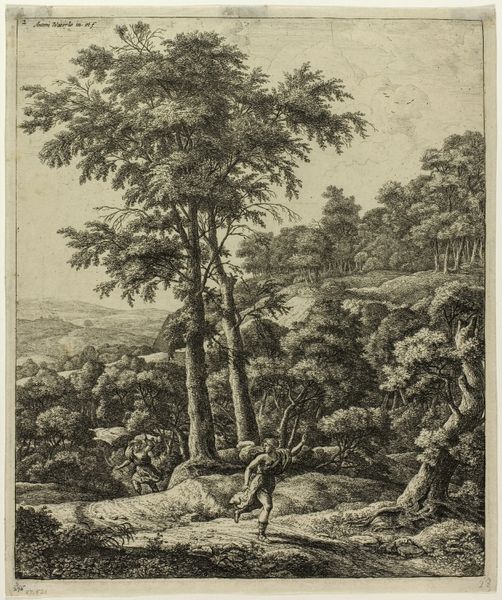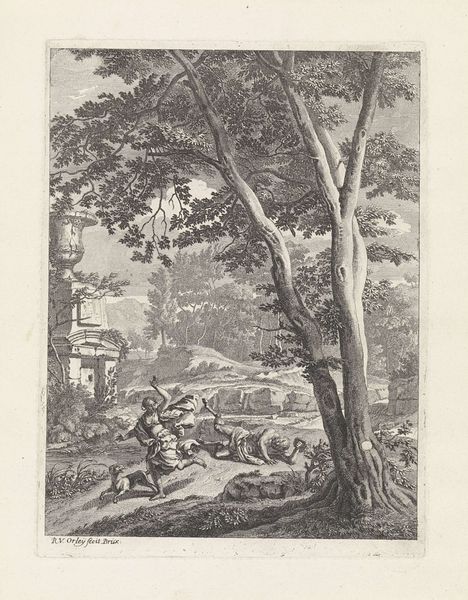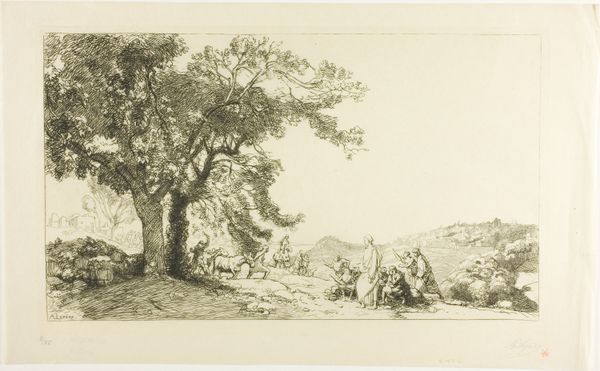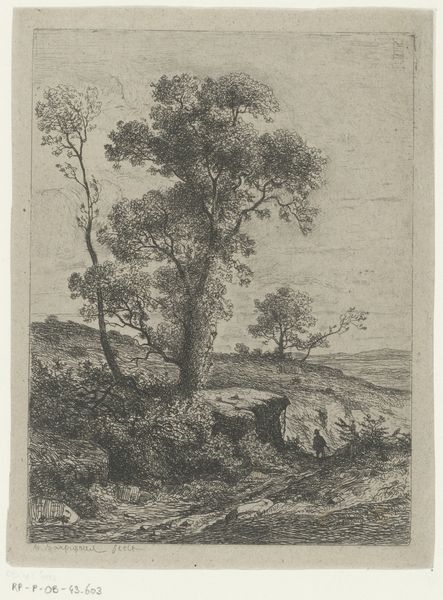
print, etching
#
baroque
#
pen drawing
#
dutch-golden-age
# print
#
etching
#
landscape
#
genre-painting
Dimensions: height 260 mm, width 236 mm
Copyright: Rijks Museum: Open Domain
Editor: This etching, "Landschap met kleine herder" or "Landscape with a Small Shepherd," by Willem de Heusch, dating from approximately 1635 to 1692, has such a calm, idyllic quality. What do you see in this piece? Curator: I see a careful construction of an idealized landscape, but more than that, I see a reflection of the social realities of the Dutch Golden Age. How does this image speak to ideas of land ownership and its portrayal during that time? Editor: I hadn’t really considered the social aspects. I was mostly thinking about the technical skill involved in creating such detail with etching. Curator: Absolutely, the skill is undeniable. But think about who had the power to commission or buy art during this era. Landscape paintings often served to legitimize land ownership. This pastoral scene, with the "small shepherd," potentially glosses over the labor and dispossession often associated with agricultural landscapes. Editor: So, the seeming simplicity of the scene is perhaps masking a more complex narrative? Curator: Precisely. De Heusch is presenting us with a carefully curated vision. The question is, whose vision is it? And who benefits from this particular depiction of rural life? Think about how the very act of representing a landscape reinforces particular power structures. Editor: I guess I hadn’t thought of landscape art as having that kind of power dynamic embedded within it. It's really making me reconsider the relationship between art and the land. Curator: It’s a starting point. Examining the historical context alongside artistic technique opens up new ways of understanding art's role in society. Hopefully this is something we can think more about during our tour.
Comments
No comments
Be the first to comment and join the conversation on the ultimate creative platform.
